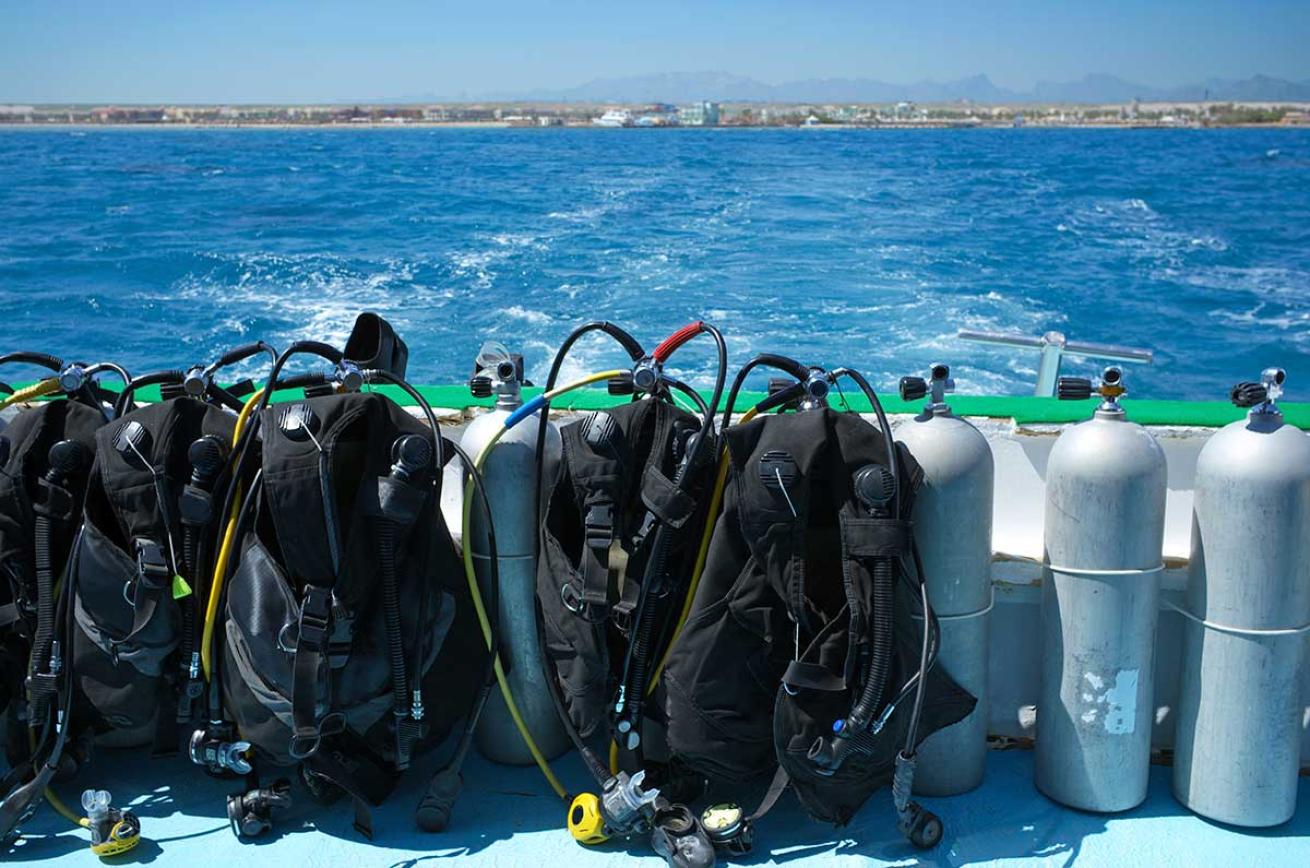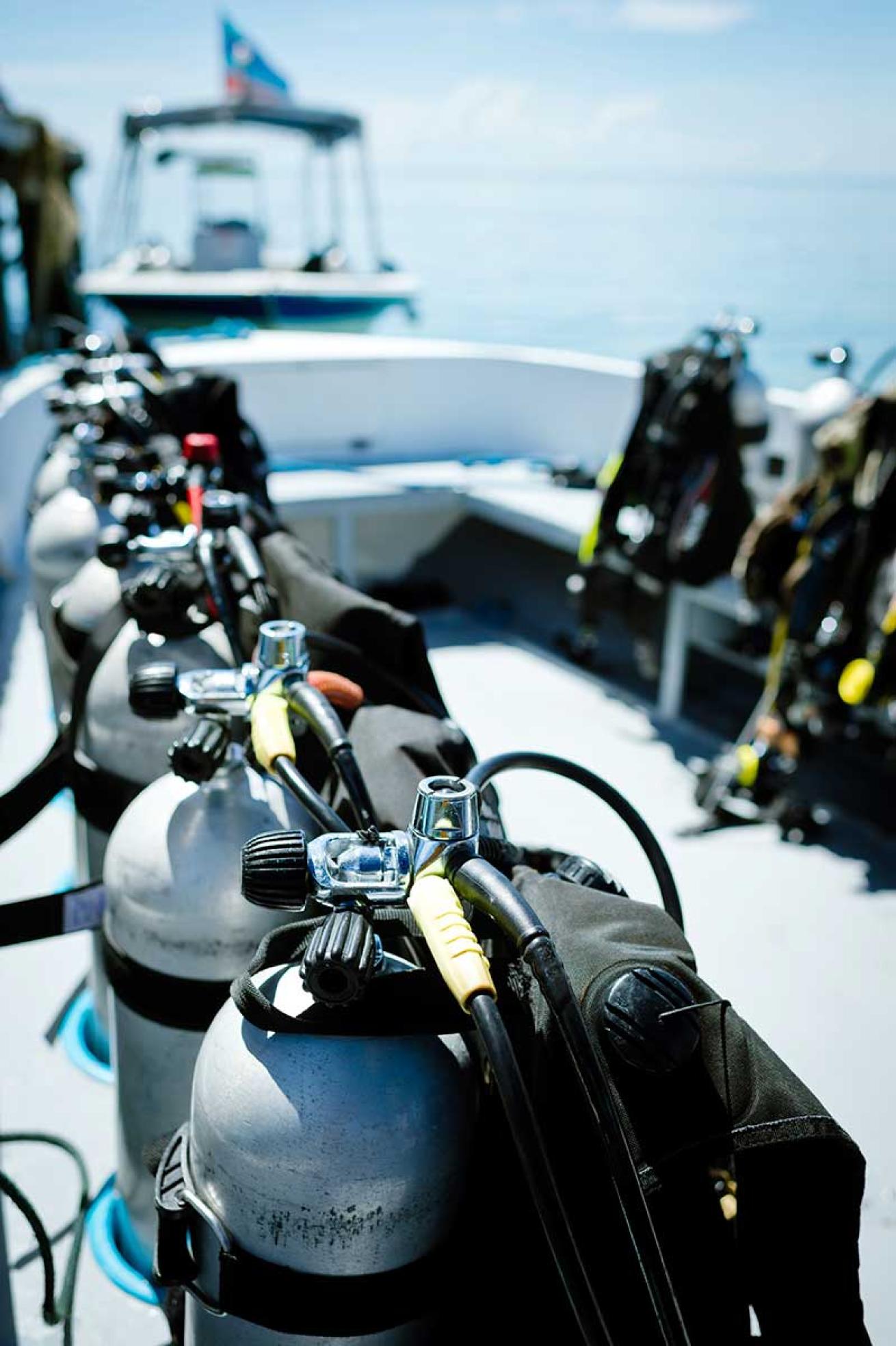Scuba Tank Maintenance Tips
Thinking about buying your own tank for scuba diving? Making the plunge can make diving a lot more convenient, but there are certain considerations to keep in mind for maintaining your tank for scuba diving.

iStockphotoThere are two cardinal rules of tank maintenance: keep water out and have it inspected regularly.
Tank Maintenance Tips
Tank owners, there are only two cardinal rules of tank maintenance:
1) Keep Water Out
It's critical to keep the inside of any tank, especially a steel tank, dry. Both steel and aluminum are subject to internal oxidation, a process that contaminates the air in the tank and weakens the metal.
Aluminum oxidation is only a minor problem, because once a thin layer of oxide forms, it protects the underlying metal from further oxidation. Although the white powdery stuff will not be good for the insides of your regulator, the tank itself is rarely harmed and can usually be cleaned.
Steel oxidation — rust — is more serious because the process can continue deep into the metal. Salt water inside the tank, and storage of the tank under pressure in one position, which concentrates the water and rust in one spot, can even turn a tank into a missile. Lying on its side will be worse than standing on end, because the walls of the tank are thinner than the bottom. A tank charged with nitrox will also be at greater risk because of the greater concentration of oxygen in the mixture.
Water usually gets inside a tank during the fill process. To keep water out:
• Dry the stem of the valve with a towel, and open the valve for a moment before attaching the fill whip. The short blast of air will drive out any water.
• Dry the whip. A good fill operator will let out a short blast of air from both the tank and the whip before putting the two together.
• Avoid the fill tank of doom. The ubiquitous tub of water at the fill station may may not be as good an idea as it sounds. That's because the water tub is a prime source of moisture getting inside scuba tanks. The alleged cooling effect of the water actually has little impact on the fill, and the tub provides little buffer in the unlikely event of a tank explosion. Better to reduce the possibility of explosions by dry-filling.
• Never completely empty a tank, and if you do, close the valve immediately. If a tank is left empty and open, it will pump moist ambient air in and out as it changes temperature.

iStockphotoKeeping water out of your cylinder is key.
2) Have Your Tank Routinely Inspected
Visual inspection, required annually, is your best insurance against corrosion, cracking and premature demise of your tank. A good visual will detect minor corrosion and correct it before it gets worse.
A good inspector will check the outside for corrosion, dents, cuts and bulges. He'll check the inside with a bright light for corrosion or contamination. He'll check the threads with a dentist's mirror for cracking and galling. He'll check the valve, the burst disc and the O-rings.
Unfortunately, many inspectors are not trained and don't really know what to look for. How can you tell?
• Look for a PSI certificate. PSI is the only full-service organization training scuba tank inspectors. About half of all tank inspectors are PSI certified.
• Ask lots of questions: "What are you looking for? How can you tell? How did you learn this?" Answers should be clear and confident.
• Leave a sticker on your tank. If the inspector doesn't peel off your "I Love Caymans" sticker to look underneath, he hasn't done a thorough job.
Hydro tests, required every five years, include a visual inspection. Then the tank is pressurized with water, usually to five-thirds the service pressure. The amount the tank expands under pressure is measured, then the amount it contracts again when pressure is relieved is measured. These figures indicate whether metal fatigue has occurred.










